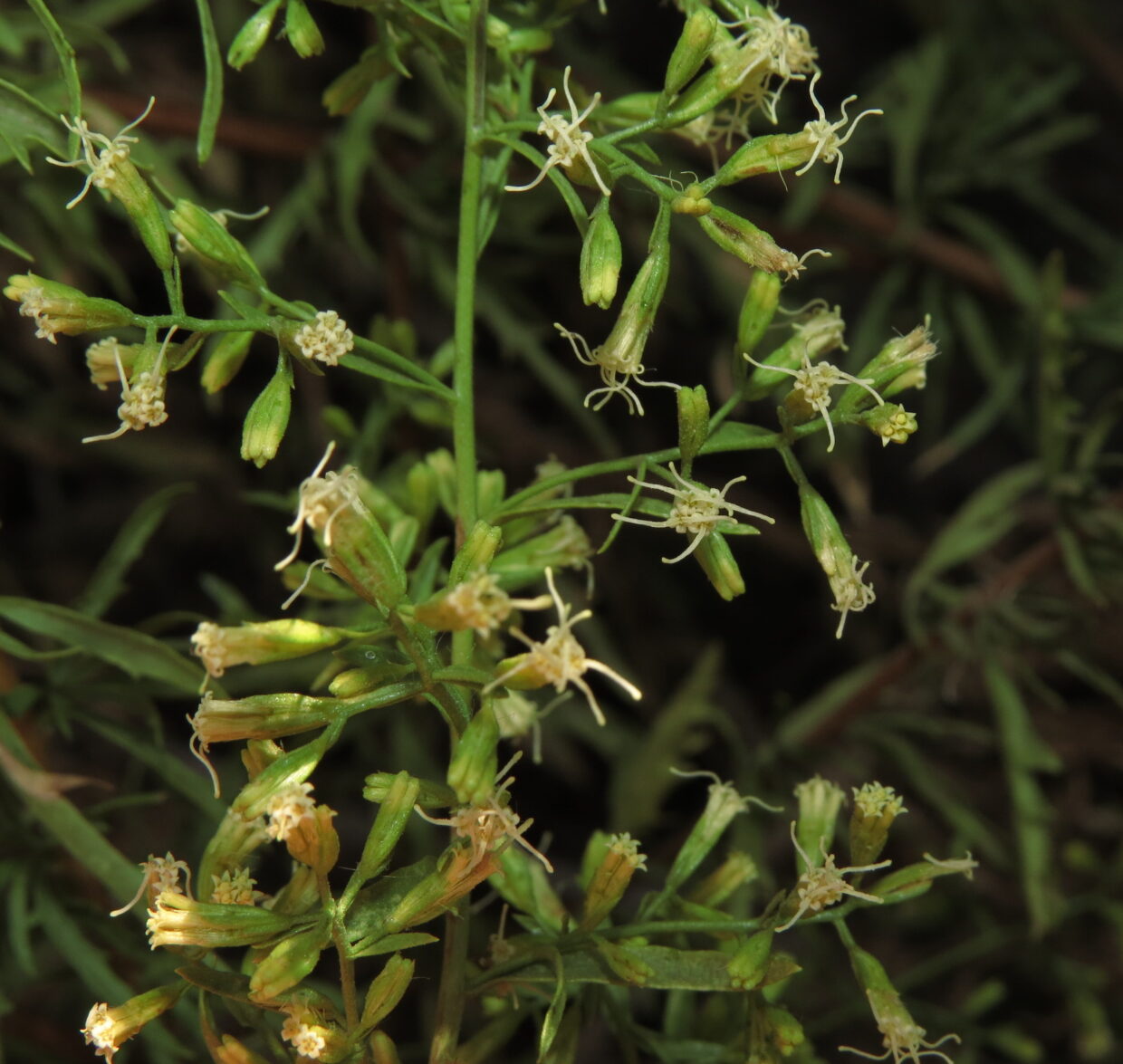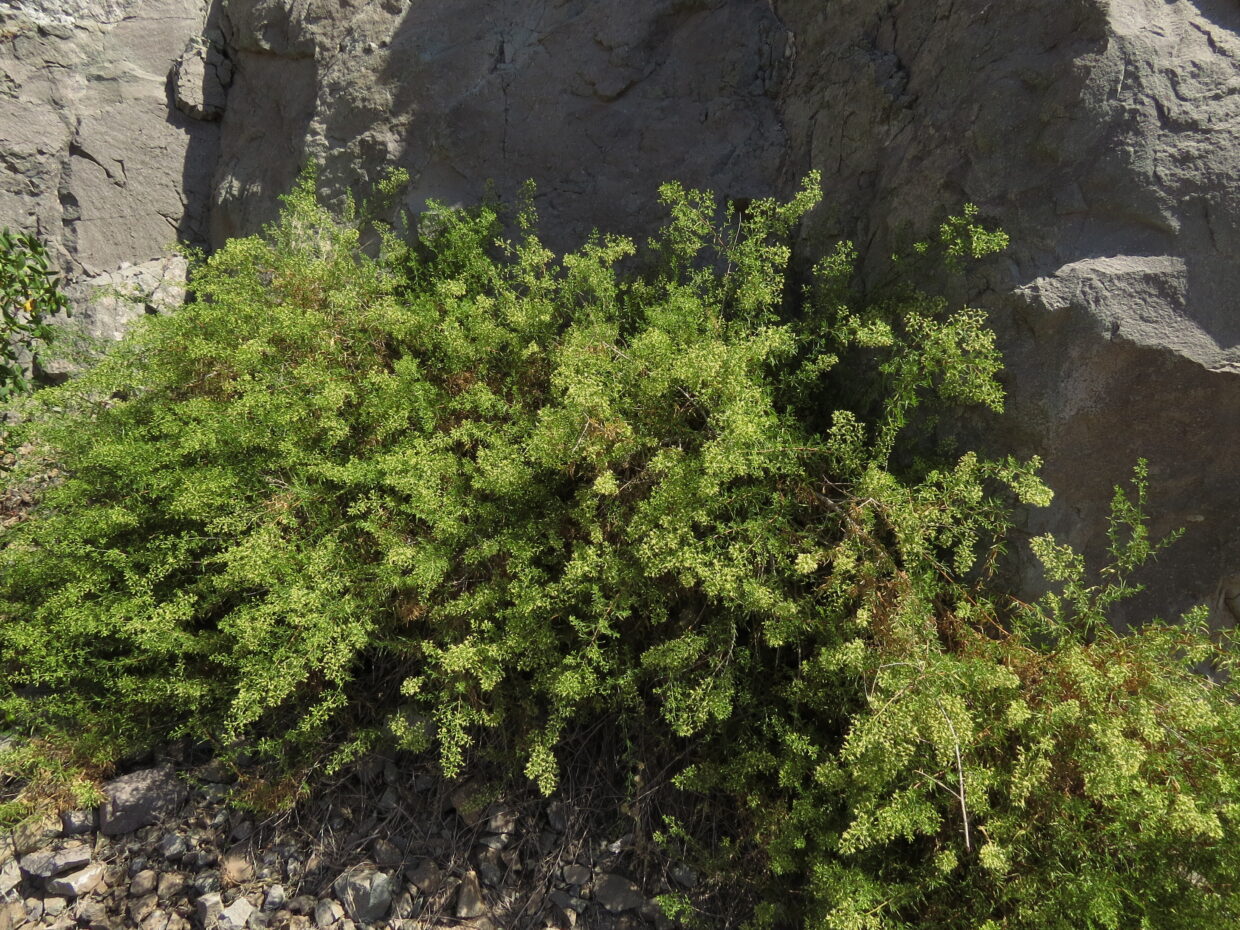Place of Publication
Index Kew. 2(3): 354 (1894)
Type citation
Chile. Region V Valparaíso: T.C. Bridges 52 (lectotype, selected by Plos and Sancho (2013: 336): E [E00249901, photo!]; isolectotypes: K [K486667, photo!], W [W0018468, photo!]); remaining syntypes: Valparaíso, H. Cuming 337, K [K486668, photo!], E [E249900, E249902, photo!]; W [W0018467, photo!]. Valparaíso, J.Gillies (not seen).
Synonyms
References
-
Jackson (1894)
Jackson, B. D.
1894. Index Kewensis, an enumeration of the genera and species of Flowering plants, vol. 2(3). Oxford: at The Clarendon press
-
Merklinger &, Luebert (2020)
Merklinger, F.F.
and
Luebert, F
2020. Notes on the genus Ophryosporus (Asteraceae, Eupatorieae) in Chile. Phytokeys 161: 61–77
Regions
Atacama,
Coquimbo,
Valparaíso and
Metropolitana
Distribution and habitat
This is the southernmost species of Ophryosporus in Chile, distributed from Region Metropolitana de Santiago northward to the Region Atacama. It is not strictly limited to the coast but also occurs further inland, for example in the Cuesta Las Chilcas or Andacollo (Merklinger & Leubert, 2020).
Distribution
-
Ophryosporus paradoxus (Hook. & Arn.) B.D.Jacks.
-
-
Ophryosporus paradoxus (Hook. & Arn.) B.D.Jacks.
-
-
Ophryosporus paradoxus (Hook. & Arn.) B.D.Jacks.
-
-
Ophryosporus paradoxus (Hook. & Arn.) B.D.Jacks.
-
-
Ophryosporus paradoxus (Hook. & Arn.) B.D.Jacks.
-
-
Ophryosporus paradoxus (Hook. & Arn.) B.D.Jacks.
-
-
Ophryosporus paradoxus (Hook. & Arn.) B.D.Jacks.
-
-
Ophryosporus paradoxus (Hook. & Arn.) B.D.Jacks.
-
-
Ophryosporus paradoxus (Hook. & Arn.) B.D.Jacks.
-
-
Ophryosporus paradoxus (Hook. & Arn.) B.D.Jacks.
-
-
Ophryosporus paradoxus (Hook. & Arn.) B.D.Jacks.
-
-
Ophryosporus paradoxus (Hook. & Arn.) B.D.Jacks.
-
-
Ophryosporus paradoxus (Hook. & Arn.) B.D.Jacks.
-
-
Ophryosporus paradoxus (Hook. & Arn.) B.D.Jacks.
-
-
Ophryosporus paradoxus (Hook. & Arn.) B.D.Jacks.
-
-
Ophryosporus paradoxus (Hook. & Arn.) B.D.Jacks.
-
-
Ophryosporus paradoxus (Hook. & Arn.) B.D.Jacks.
-
-
Ophryosporus paradoxus (Hook. & Arn.) B.D.Jacks.
-
-
Ophryosporus paradoxus (Hook. & Arn.) B.D.Jacks.
-
-
Ophryosporus paradoxus (Hook. & Arn.) B.D.Jacks.
-
-
Ophryosporus paradoxus (Hook. & Arn.) B.D.Jacks.
-
-
Ophryosporus paradoxus (Hook. & Arn.) B.D.Jacks.
-
-
Ophryosporus paradoxus (Hook. & Arn.) B.D.Jacks.
-
Show all locations
Key characteristics
This species is a very distinct and can be differentiated from O. triangularis by its larger, lanceolate and rather papery leaves with strongly lobed margins, as opposed to the small, triangular, slightly fleshy leaves with revolute margins in O. triangularis. The secondary inflorescences are thyrsoid, emerge terminally and produce florets with white corollas and a pappus of white bristle-like hairs (setae) up to c. 3 mm long (Merklinger & Leubert, 2020).
Notes
Seed of this species is banked by the national seed bank of Chile, INIA.





